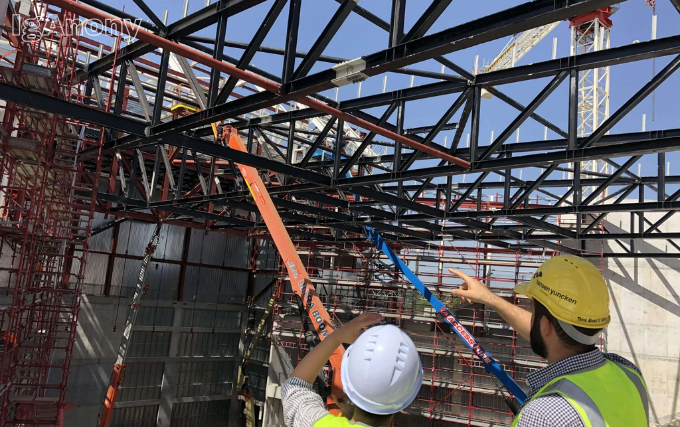Remedial building services are essential to maintaining and restoring the structural integrity and value of properties. Whether a building is suffering from decades of wear and tear, design flaws, environmental damage, or poor construction, remedial measures can significantly extend its life and ensure the safety of its occupants. This guide will delve into what remedial building services entail, why they are important, and how professional interventions can save buildings from deterioration.
Understanding Remedial Building Services
The term remedial building services encompasses a broad spectrum of activities aimed at repairing, refurbishing, and improving existing buildings. These services are often a necessity for older buildings that no longer meet modern safety standards or that have suffered structural damage. However, even relatively newer structures can require remedial work due to a variety of issues such as substandard building practices or environmental factors.
Common signs that a building may require remedial services include visible cracks in walls or foundations, water ingress, corrosion of steel elements, and spalling concrete. These symptoms can lead to more significant problems if not addressed promptly, which is where skilled professionals come into play.
Comprehensive Diagnostic Investigations
Before any remedial work can commence, it is crucial to carry out diagnostic investigations for buildings. These investigations involve a thorough examination of the property to assess the extent of damage and identify the underlying causes. By using a combination of visual inspections, non-destructive testing, and materials sampling, experts can formulate a plan that targets the specific needs of the building.
Diagnostic investigations cover various aspects, including the structural safety of the building, the integrity of building materials, and the effectiveness of existing damp-proofing and waterproofing measures. They also help determine if there are any health risks, such as the presence of hazardous materials like asbestos. The insights gained from these investigations are crucial to developing an effective remedial strategy.
Design and Implementation of Remedial Strategies
Once the diagnostic phase is complete, remedial building experts use the gathered information to design customised solutions for the property. These may involve underpinning works to strengthen foundations, concrete cancer repair, waterproofing, facade recladding, or even complex structural adjustments.
The implementation of these strategies requires skill and precision, as remedial works must be carried out with minimal disruption to the building’s occupants. Additionally, these solutions must be sustainable and long-lasting, ensuring that the building can withstand the test of time and the elements.
The Importance of Expert Remedial Engineering Solutions
In the realm of remedial interventions, the role of expert remedial engineering solutions cannot be overstated. Remedial engineers bring a wealth of knowledge from fields such as structural engineering, materials science, and construction methods, which are crucial for diagnosing problems and designing effective solutions.
Moreover, remedial engineers work alongside architects, builders, and other specialists to achieve the best possible outcome for the property. By harnessing their expertise, property owners can be confident that the remedial works are not only effective but also comply with all relevant regulations and standards.
Choosing the Right Remedial Building Service Provider
When selecting a provider for remedial building services, it is important to consider their experience, qualifications, and track record of successful projects. A reputable service provider will be transparent about their methods, provide clear communication throughout the project, and ensure that all work is completed to the highest standards.
They should also be able to offer a comprehensive service package, from initial diagnostic investigations through to the completion of all necessary repairs. This turnkey approach ensures consistency and quality throughout every stage of the process.
Preventative Measures and Ongoing Maintenance
While remedial building services are reactive in nature, focusing on repairing existing damage, preventative measures play a critical role in reducing the need for future remedial work. Regular building inspections, routine maintenance, and timely minor repairs can all help prevent minor issues from escalating into major problems that require extensive remedial efforts.
Ongoing maintenance, for instance, can identify early signs of water damage or structural weakness, allowing for cost-effective repairs before the integrity of the building is compromised. By being proactive, property owners can save substantial amounts of money and avoid the disruption that comes with more significant remedial projects.
The Financial Advantages of Remedial Building Services
Although remedial building services represent an investment in the property, they offer significant financial benefits in the long run. By restoring a building’s structural integrity, these services can enhance the property’s market value, curb the potential for lost revenue due to building closures, and reduce the likelihood of costly emergency repairs.
Furthermore, remedial interventions can lead to improvements in energy efficiency, resulting in lower utility bills and a smaller carbon footprint. In this way, remedial work not only addresses immediate concerns but also contributes to the overall financial health of the property.
Environmental and Safety Considerations
It is essential to acknowledge the environmental impact of buildings, particularly when it comes to remedial work. Service providers must adhere to strict environmental regulations, ensuring that any hazardous materials are handled safely and that waste is disposed of responsibly.
In terms of safety, the execution of remedial projects should prioritise the wellbeing of both the workers involved in the repairs and the building’s occupants. With expert remedial engineering solutions, safety risks can be appropriately managed throughout the project’s lifecycle.
Conclusion
Remedial building services are a complex field that demands a high level of expertise and precision. From the initial diagnostic investigations to the final implementation of remedial strategies, each step requires careful planning and execution. By choosing the right service provider and placing emphasis on expert remedial engineering solutions, property owners can protect their investments, ensuring their buildings remain safe, functional, and valuable for many years to come.
Whether addressing immediate structural concerns or adopting a proactive approach to maintenance, remedial building efforts are crucial for the longevity of our built environment. With the necessary remedies in place, buildings can continue to fulfil their roles as homes, workplaces, and landmarks in our communities.







